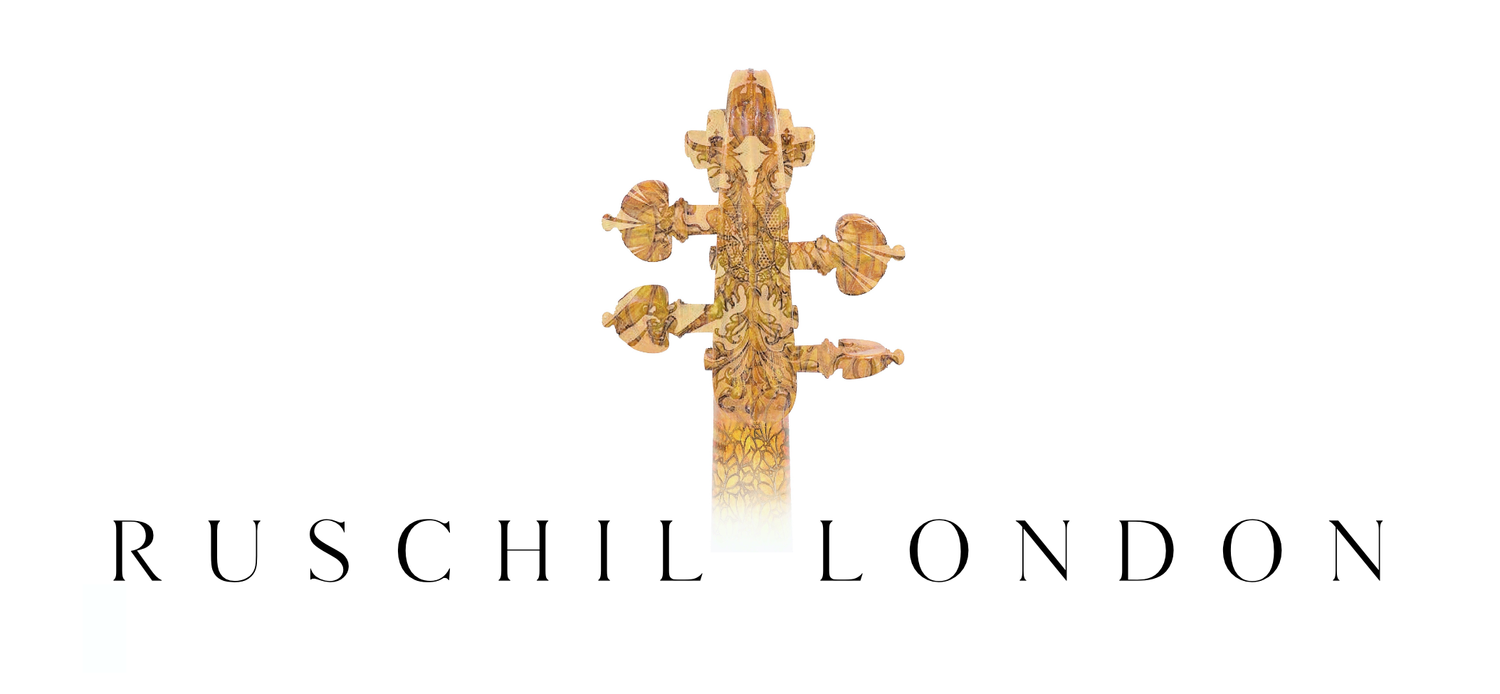“A fine violin by Jean-Baptiste Vuillaume, Paris 1862”
£Not Available
“An excellent example after Stradivari from one of the most important luthiers in history”
About The Violin
About The Violin
A fine violin by one of history’s greatest luthiers Jean-Baptiste Vuillaume, Paris 1862. In an excellent state of preservation and fully certified by Emil Herrmann New York/Berlin, 1927.
The violin is made from the finest materials in the Vuillaume workshop, stunning deeply flamed maple and fine spruce. Made in the antique style after one of the many Stradivari violins that came through the Vuillaume workshop. Precise, historically accurate work, the very highest standard of craftsmanship. Beautifully finished with a very fine, ruby red varnish over a golden ground. Every aspect of the violin was made to be highest level in the world.
The neck of the violin is original.
The violin is labelled, “ Jean Baptiste Vuillaume a Paris, 3 rue Demours - Ternes, fait pour Paul Maluninne 1862”. It bears the number 2439 in the centre of the back and Vuillaume’s own signature on the upper treble back.
Tonally the violin is focused, voluminous and accurate with the soloistic prestige that comes with a fine violin by Jean-Baptiste Vuillaume. It has a confidence, boldness and is in a class of its own.
About The Maker:
In addition to being a renowned and prolific maker of fine violins, Jean Baptiste Vuillaume was a highly successful dealer, connoisseur and inventor. His workshop in Paris employed and trained some of the finest 19th-century violin and bow makers, including Maucotel, Silvestre, Derazey, the Peccatte brothers, Persoit, Fonclause, Simon and Voirin. The workshop, which Vuillaume founded in the rue Croix des Petits Champs in 1827 and moved to the rue Demours-Ternes in 1858, produced over 3,000 instruments, which are similar and abundant enough to be readily identifiable. Most also bear a label, brand, number and signature identifying them as examples of the Vuillaume workshop.
Born in the violin making city of Mirecourt, Vuillaume moved to Paris in 1818 and apprenticed with Chanot before establishing his own workshop, where he began by imitating the work of Lupot. However, Vuillaume quickly gained skill as a copyist of older instruments, particularly those of Stradivari and Guarneri 'del Gesù', which coalesced with an early interest in violin dealing. In 1855 Vuillaume made the astute move to buy up the Italian dealer Luigi Tarisio's stock of 144 instruments, which included some of Stradivari's best works, not least the 'Messiah' of 1716. Among Vuillaume's more interesting inventions are the giant three-stringed octobass and the self-rehairing bow.
Watch The Video
Watch The Video
Photos of The Violin
Photos of The Violin



















Full Certificate of Authenticity by Emil Herrmann
New York/Berlin -1927
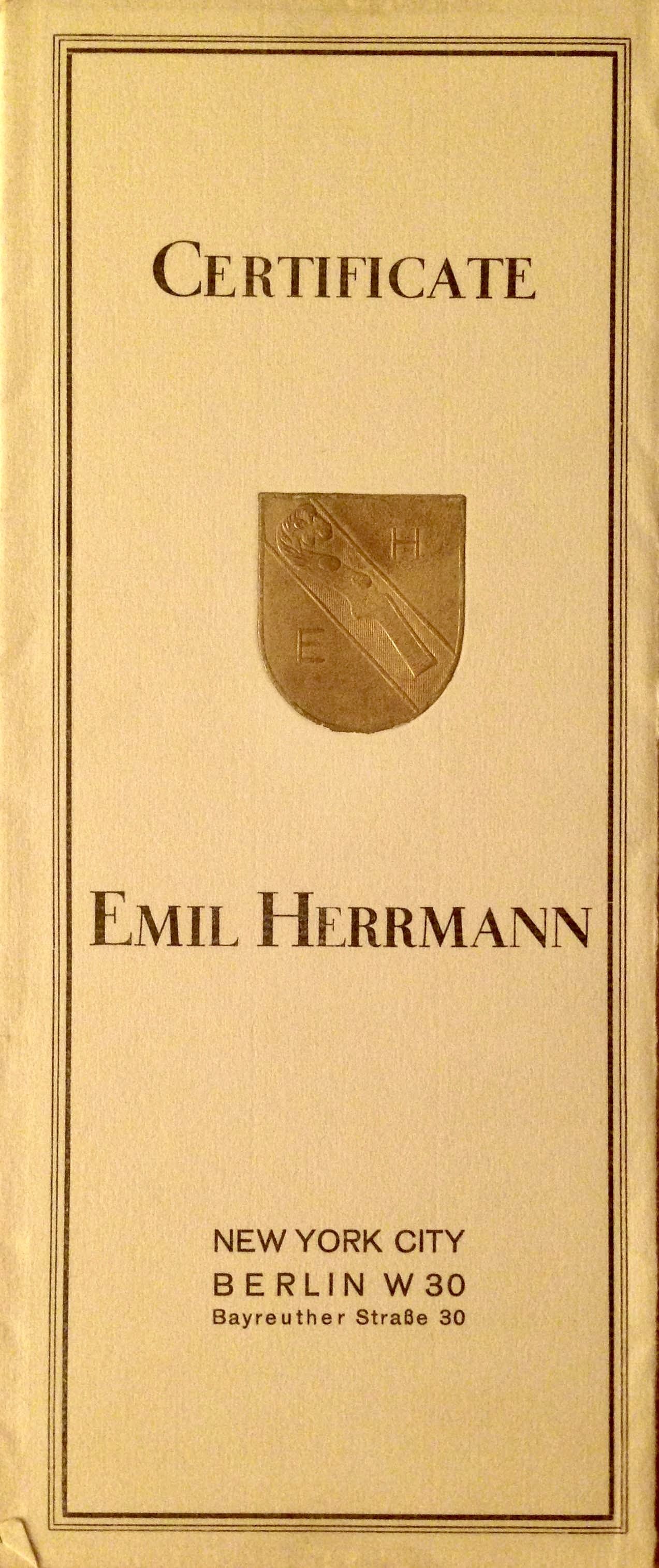
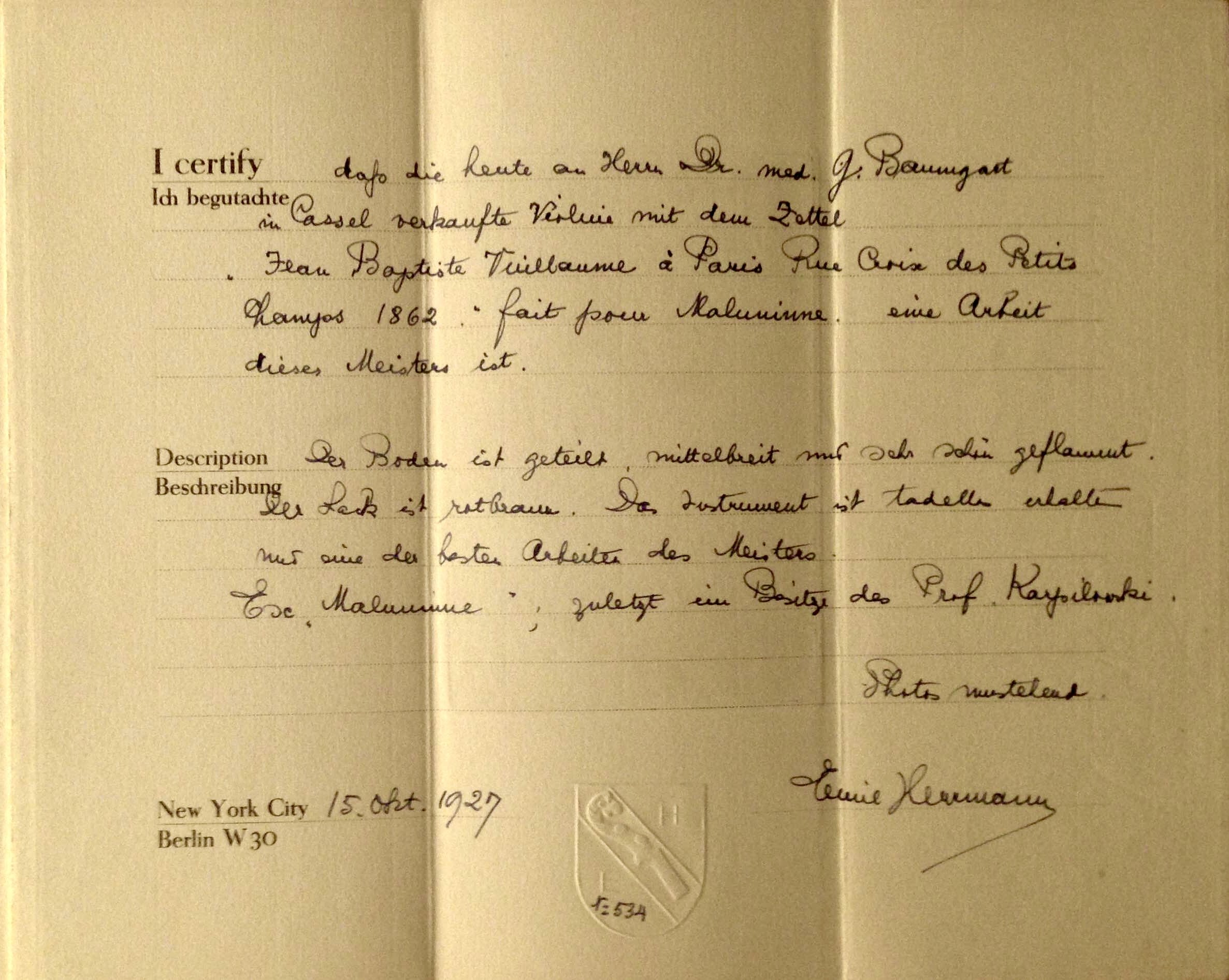

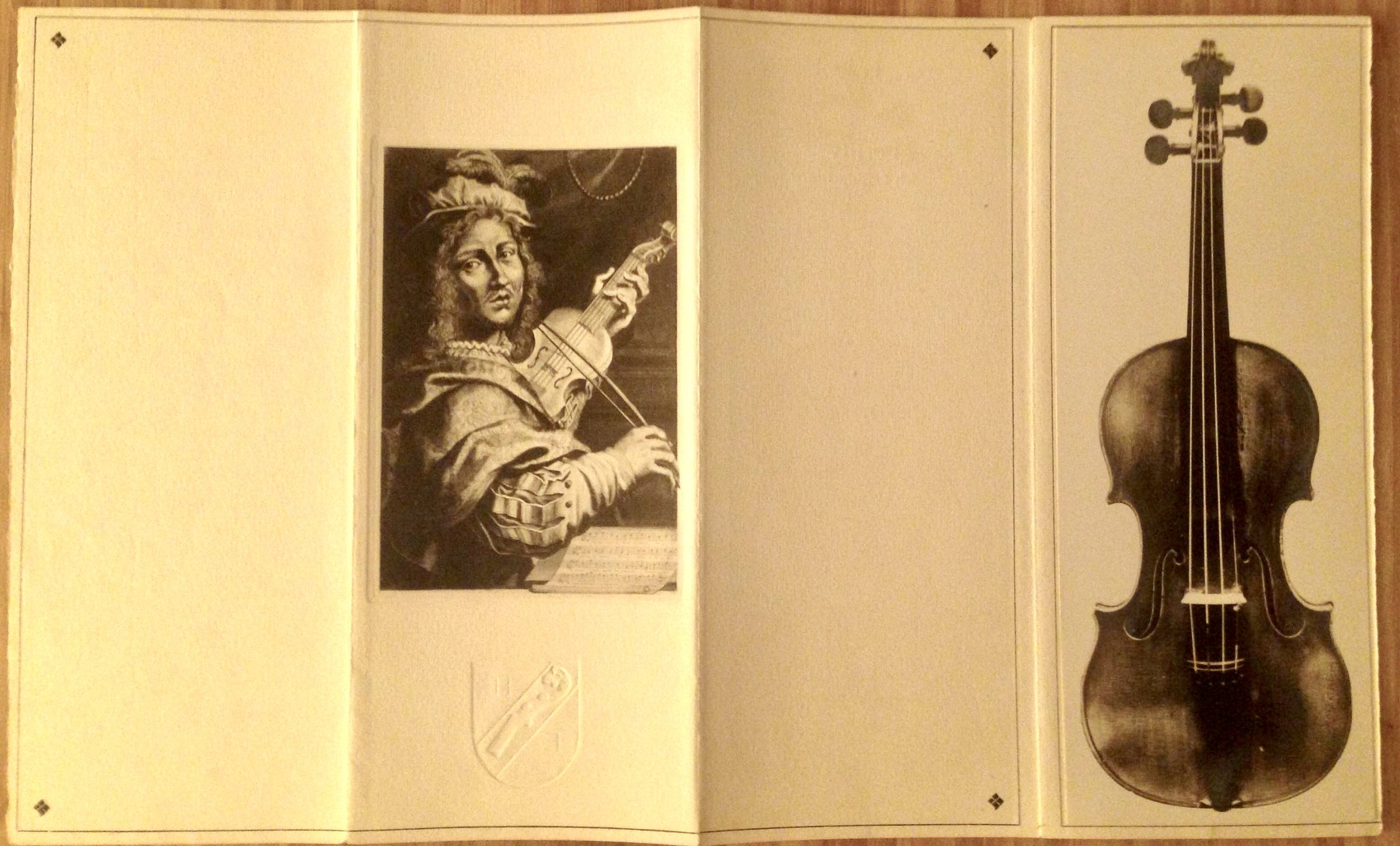
Specifications
Specifications
Measurements:
Back Length: 14 1/16”
Stop Length: 7 11/16”
Neck Length: 5 1/8’”
String Length: 12 15/16”
Elevation: 1 1/16”
Upper Bout: 6 5/8”
Centre Bout: 4 1/2”
Lower Bout: 8 1/8”
Materials:
Front:
Medium grain Alpine spruce
Back, Ribs & Neck:
Deeply and regularly flamed, medium/fine grain Balkan maple, two-piece back, flame sloping downwards.
Fingerboard, Topnut & Saddle:
Ebony
Blocks & Linings:
Spruce
Pegs:
Heart model boxwood with ebony accents, made in Germany.
Tailpiece:
Boxwood with ebony fret. Handmade in England by Alexander Accessories.
Chinrest:
Guarneri model boxwood with titanium barrels. Handmade in England by Alexander Accessories
Other Materials:
Maple bridge, spruce soundpost, maple & ebony purfling, Thomastik Pi G,D & A strings with Optima Goldbrokat medium E string
Get More Information & Try This Violin
To get more information, ask a question or book an appointment to try this violin, just click the button below to contact us.
Other Available Violins

A fine violin by Jean-Baptiste Vuillaume, Paris 1862

A violin by Antoni Ruschil, “The Argyle”, London 2024

A fine French violin by H.C. Silvestre, Lyon 1872
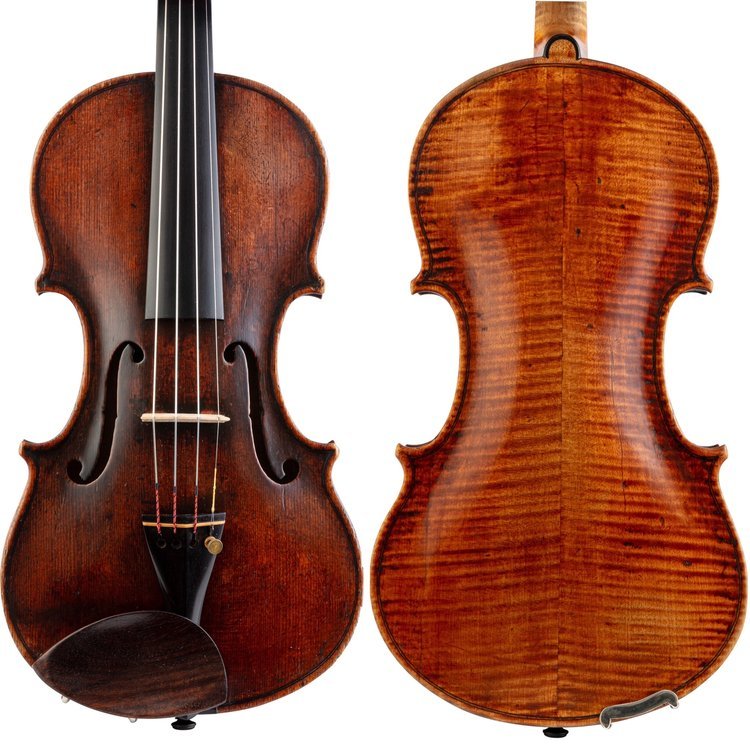
An Italian violin by Antonio Mariani, Pesaro c.1640

An Italian violin by Ernesto Pevere, Ferrara c.1928

An English violin from the workshop of John Betts, London c.1840
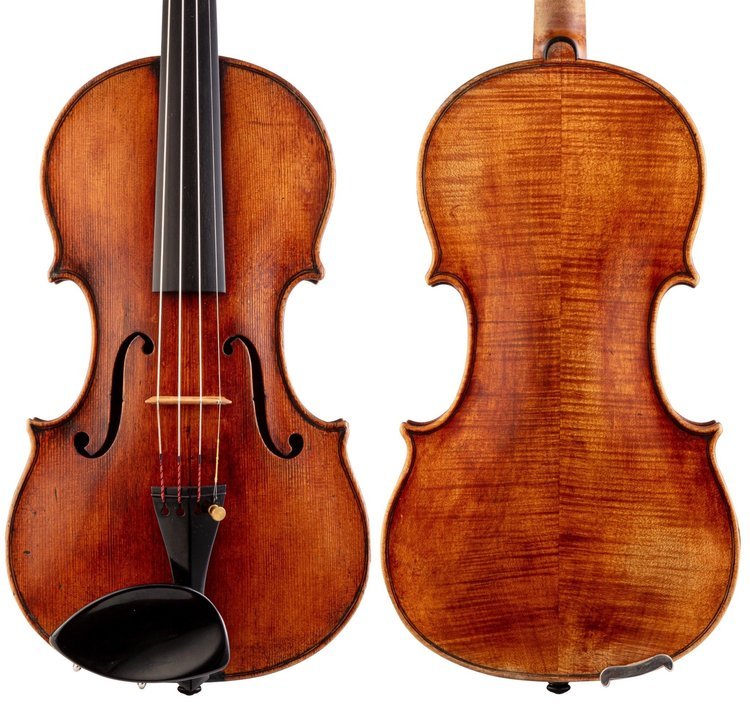
An English violin by George Craske, c.1880

A violin by Antoni Ruschil, “The Hooks”, London 2022

A fine English violin by Charles Harris, c.1820

An English violin by Lockey Hill, London c.1800

A French violin by Georges Apparut, Mirecourt 1937

A fine violin by Italian master Carlo Tononi, Bologna c.1710

